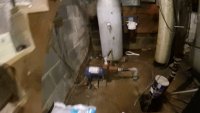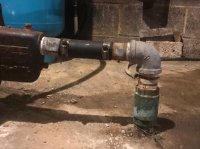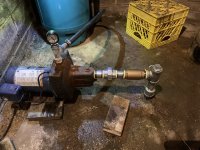I purchased a home a few years ago with a shallow well in the basement. Recently my tenants have been complaining about a "sulfur" smell in the tap water. The well has high iron content which is handled with a simple paper filter, but I suspect the smell is iron bacteria. I have a properly a few miles away that has the same issue. I paid someone to chlorine treat the well at that location and the problem was solved. The problem I have here, is the shall well has no well head. There is just a pipe sticking out of the concrete slab in the basement. As far as I can tell there is no way to get any chlorine into the well. Any ideas? Do I need to dig up the concrete to access the well head? Or is there even a well head to be accessed? See the attached to see what my setup looks like.
1. Never use a paper (cellulose) filter on non-chlorinated well water. Use polypropylene or polyester. They can be pleated, and look like white paper when new.
2. I have a writeup that is written for deep wells with pitless adapters. Looking at your picture, I don't see how you could adapt that to your well setup, because, as you point out, there is no way to introduce sanitizing solution below the check valve at the floor. If you ever re-do the well, and put a tee in there that gives access, you could adapt the process.
https://terrylove.com/forums/index....izing-extra-attention-to-4-inch-casing.65845/ Most people us a simpler process, but need do it more often.
There are ways to treat the water to remove H2S and more. If the H2S is mostly on the hot water, there are ways to deal with that. When you flush the WH, you might see some black sediment as the first stuff out of the drain valve.
Maybe you could unscrew the check valve, and put a bronze, brass, or stainless tee there with a cap on the straight side. Then the check valve would go on the side port ("bull") of the tee. Get rid of the galvanized elbow in the process.
I am not a pro.




